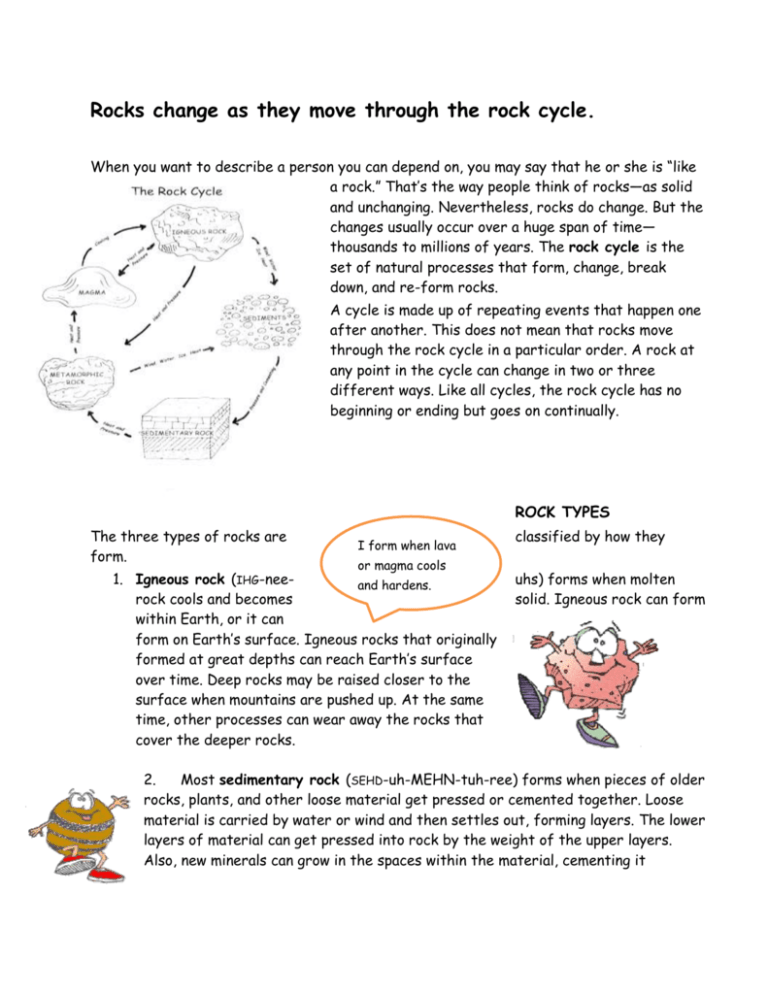Reading for rock cycle
advertisement

Rocks change as they move through the rock cycle. When you want to describe a person you can depend on, you may say that he or she is “like a rock.” That’s the way people think of rocks—as solid and unchanging. Nevertheless, rocks do change. But the changes usually occur over a huge span of time— thousands to millions of years. The rock cycle is the set of natural processes that form, change, break down, and re-form rocks. A cycle is made up of repeating events that happen one after another. This does not mean that rocks move through the rock cycle in a particular order. A rock at any point in the cycle can change in two or three different ways. Like all cycles, the rock cycle has no beginning or ending but goes on continually. ROCK TYPES The three types of rocks are form. I form when lava or magma cools 1. Igneous rock (IHG-neeand hardens. rock cools and becomes within Earth, or it can form on Earth’s surface. Igneous rocks that originally formed at great depths can reach Earth’s surface over time. Deep rocks may be raised closer to the surface when mountains are pushed up. At the same time, other processes can wear away the rocks that cover the deeper rocks. classified by how they uhs) forms when molten solid. Igneous rock can form 2. Most sedimentary rock (SEHD-uh-MEHN-tuh-ree) forms when pieces of older rocks, plants, and other loose material get pressed or cemented together. Loose material is carried by water or wind and then settles out, forming layers. The lower layers of material can get pressed into rock by the weight of the upper layers. Also, new minerals can grow in the spaces within the material, cementing it together. Some sedimentary rocks form in other ways, as when water evaporates, leaving behind minerals that were dissolved in it. 3. Metamorphic rock (MEHT-uh-MAWR-fihk) forms when heat or pressure causes older rocks to change into new types of rocks. For example, a rock can get buried deeper in the crust, where pressure and temperature are much greater. The new conditions cause the structure of the rock to change and new minerals to grow in place of the original minerals. The rock becomes a metamorphic rock. Like igneous rocks, metamorphic rocks can be raised to Earth’s Heat + Pressure surface over time. ROCKS IN THE CRUST Igneous, sedimentary, and metamorphic rocks are all found in Earth’s crust. But these rock types are not evenly distributed. Most of Earth’s crust—95 percent of it—consists of igneous rock and metamorphic rock. Sedimentary rock, which forms a thin covering on Earth’s surface, makes up only 5 percent of the crust. The distribution of rock types is a reflection of the rock cycle. Sedimentary rocks are most common at the surface because they are formed by processes that occur at the surface. Most igneous rocks and metamorphic rocks are formed by processes that occur deeper within Earth.







